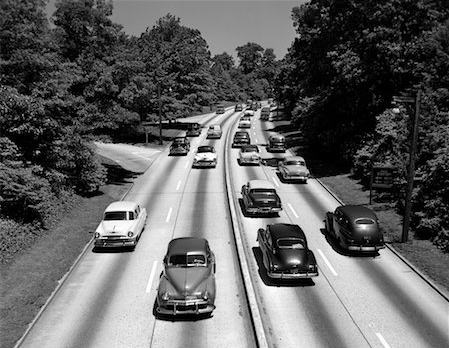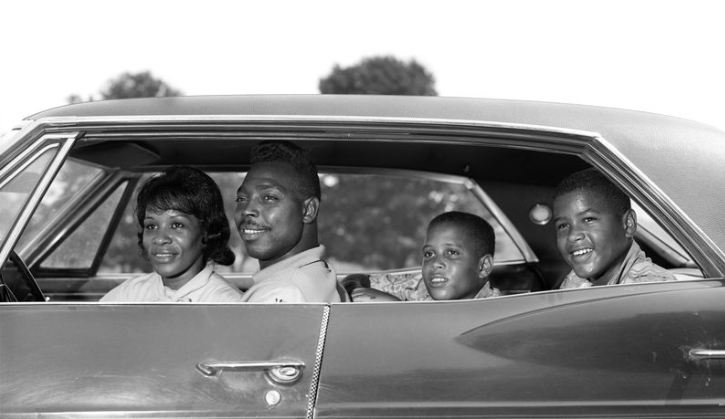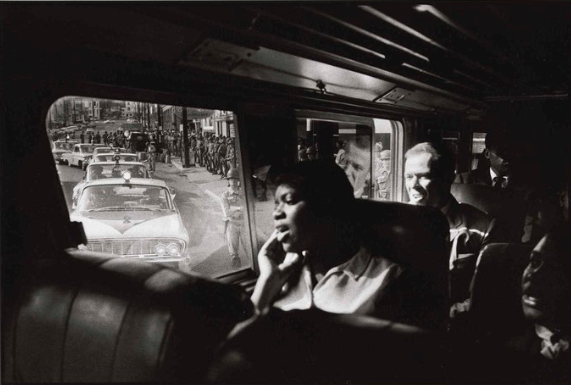The Green Book: The Original Black Travel Guide
The U.S. Dept. of Transportation’s Federal Highway Administration’s Map. (1940)
Victor Hugo Green, Founder and Publisher of The Green Book.
Seeing the United States of America by way of the open road is a birthright for anyone who can get behind the wheel. However, when Victor Hugo Green, a postal worker moonlighting as a travel writer, first published ‘The Negro Motorist Green-Book’ or 'The Green Book' travel guide in 1936 it seemed more like a distant spoil for blacks nearly sixty years post-Reconstruction. Seventeen years after race riots tore through Chicago and over twenty other cities that incited terror amongst blacks. Fifteen years removed from when residents of Tulsa’s Greenwood District were attacked by white mobs as the neighborhoods and businesses that comprised the city’s thriving epicenter—Black Wall Street—were each razed to the ground.
The practice of Jim Crow and the Supreme Court's ruling in favor of ‘separate, but equal’ thickened the already cemented age-old boundaries of the South. Blacks who fled those landscapes of tall trees with sturdy branches that bore ‘strange fruit’ during The Great Migration soon found themselves under the crack of a policeman’s billy club and a host of social inequities linked to the racial discrimination almost commonplace up North and out West. Even those wealthy enough to afford the finer things in life were still unjustly profiled and encountered brushes with intimidation. This was the grim social backdrop firmly in place before Victor Hugo Green’s idea to promote black travel ever reached the hands of his audience.
The Negro Motorist Green-Book. (1940 Edition)
Printing the first editions from his St. Nicholas Avenue office just north of West 155th Street, Green started his inked pursuit to radically alter opinions and diminish the fears blacks had about exploring the nation their ancestors built without compensation. Victor Hugo Green’s philosophy to help black people navigate their own journeys to the places they only curiously pointed to on a map was groundbreaking. This annual publication was dedicated to helping drivers make the trek from Detroit back down to Jackson for the holidays, spend a honeymoon at Niagara Falls in the spring or make the move to Oakland from Atlanta when the leaves started turning light brown and deep carmine.
Victor Hugo Green's travel guide was unlike any of the others of the time during its five years of existence. The honest tone that spoke to aspiring motorists looking to get away was unsaid. Race, as it does in some cases now, determined access to certain spaces be they public or private then. The Green Book granted many with a healthy peace of mind and a better sense of security during their trip by informing motorists where to go in order to avoid harassment. The 1941 printing features a letter from William Denkins, Jr. of Trenton, New Jersey to Victor Hugo Green echoes it.
“The Green Book not only serves the Negro motorist well, but it does a splendid job for its advertisers.”
Black newspapers like The Pittsburgh Courier, with its large national reach during the 1930s, only had but so much ad space reserved for all the businesses across the country. This was a decade before television. That meant no commercials to reach customers during this new age for black travel. And as for smartphones--well, you get the point. Having the name of your establishment printed in The Green Book was a national billboard letting tourists and residents alike know you were open for business. Restaurants, gas stations, mechanics, taxicab companies, beauty salons, tailors, night clubs, hotels--everything. All black-owned.
Pages 14-15 of the 1941 Edition featuring services for motorists heading through Kentucky and Louisiana. (Courtesy of the Smithsonian’s National Museum of African-American History and Culture)
The Green Book enhanced the way many blacks looked at our network built on the foundation of commerce within our communities with the potential to expand. It was a celebration of us printed annually showcasing the entrepreneurial spirit that often went unseen by the national press. Word of mouth reviews increased exposure and patronage for those businesses listed in The Green Book. Though its assistance in the financial empowerment of the black community can be quantified, its significance on a communal level is invaluable.
One aspect of The Green Book’s true impact that gets overlooked is the list of tourist homes available in every city and town. As sales of the publication increased so did the number of residents from all over the map eager to welcome motorists of color into their homes. Though their names may fail to ring a bell, these borders were the unsung players in Victor Hugo Green’s automobile-led movement in black travel quietly sweeping the country. Mrs. G.W. Obie of Phoenix, Mrs. E.C. Moore of Macon, E.B. Reeves of East St. Louis, F. Brown of Battle Creek, Mrs. J. Baker of Chattanooga and Mrs. A. Robinson of Tacoma are the few that represent the many. These open doors to a hot meal and made bed were given with a side of conversation during these arrangements. The Green Book gave motorists the chance to ‘carry the news’ from one town to the next to tell what was happening in the varying segments of the black community.
Victor Hugo Green's oversight of The Green Book ended upon his death in 1960. He was 67. His widow, Alma, kept the publication alive until 1966. Over that thirty-year span, Green's legacy of helping to ease white intimidation on the road by highlighting black businesses and communities along each route was tactically savvy. His navigation helped guide new families of 'the baby boom' after World War II to enjoy national parks on both sides of the Mississippi. The same can be said for the influx of trips to family reunions in the 1950s. His work also holds true in charting the course for those following the busloads of Freedom Riders to the protests at the dawn of and throughout the Civil Rights Movement. Victor Hugo Green’s pushing of the seemingly immobile paradigm on domestic black travel helped fuel the collective imagination of those looking to experience the place they called home and lands elsewhere.








